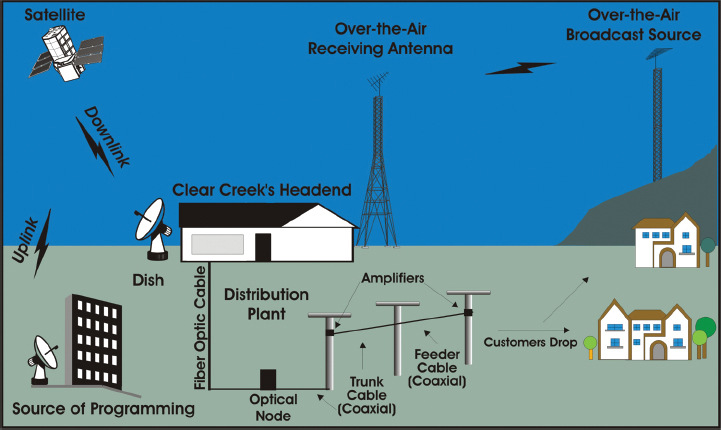Introducing Cable
Printed Page 232
Despite the quiz-show scandals, broadcast television continued to grow in popularity in the late 1950s; however, some communities were unable to receive traditional over-the-air TV signals, often because of their isolation or because mountains or tall buildings blocked transmission. To solve this problem, the first small cable systems—called CATV, or community antenna television—originated in Oregon, Pennsylvania, and New York City in the late 1940s. New cable companies ran wires from relay towers that brought in broadcast signals from far away. The cable companies then strung wire from utility poles and sent the signals to individual homes, stimulating demand for TV sets in those communities.
These early systems served only about 10 percent of the country and usually contained only twelve channels because of early technical and regulatory limits. Yet cable offered big advantages. First, it routed each channel in a separate wire, thereby eliminating the over-the-air interference that sometimes happened with broadcast transmissions. Second, it ran signals through coaxial cable, a core of aluminum wire encircled by braided wires that provided the option of adding more channels. Initially, many small communities with CATV received twice as many channels as were available over the air in much larger cities. Eventually, the cable industry would pose a major competitive threat to conventional broadcast television. But cable would also encounter new challenges (and opportunities) with the invention of satellite TV, which uses large dishes to "downlink" signals from communication satellites in order to transmit new cable TV services like HBO and CNN (see Figure 8.1).
